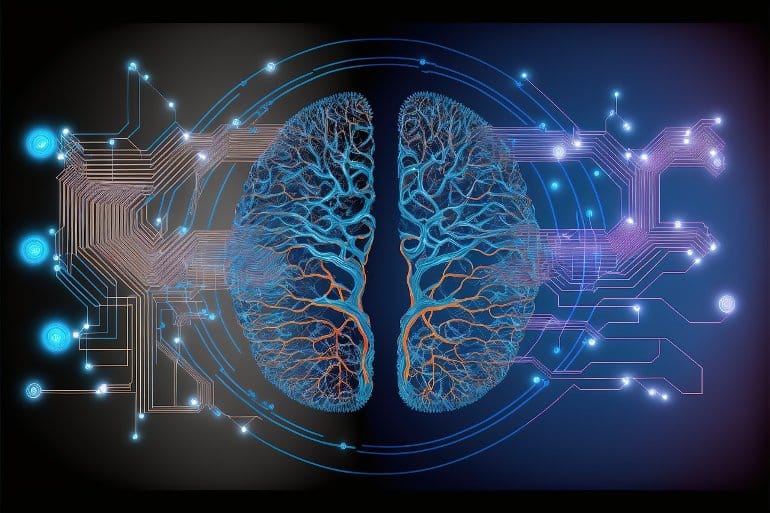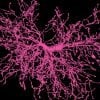Summary: A simple motion like a push of a button can send ripples of activity across neurons spanning the entire brain, a new study reports.
Source: University of Oregon
Even a simple movement like pushing a button sends ripples of activity throughout networks of neurons spanning across the brain, new University of Oregon research shows.
The finding highlights just how complex the human brain is, challenging the simplified textbook picture of distinct brain areas dedicated to specific functions.
“It’s really well known that the primary motor cortex controls movement output,” said Alex Rockhill, a graduate student in the lab of human physiology professor Nicki Swann. “But there’s a lot more to movement than this one brain area.”
Rockhill is the first author of a new paper from the lab, published in December in the Journal of Neural Engineering.
Swann and her team are studying brain networks in humans thanks to a collaboration with Oregon Health & Science University doctors and researchers. The OHSU team is using a technique called intracranial EEG to determine where seizures may be starting in patients with treatment-resistant epilepsy. They surgically implant an array of electrodes into patients’ brains to pinpoint precisely when and where a seizure is happening and potentially remove the affected brain area.
Intracranial EEG also can provide valuable insight into other brain activity, too. It’s a “gold standard” technique, Swann said. But it’s one researchers rarely have access to, because implanting the electrodes is such an intensive process. Participants in Swann’s study have agreed to let her team study their brains while they’re already hooked up to electrodes for the seizure study.
Swann and her colleagues gave study participants a simple movement-related task: pushing a button. They recorded the activity of thousands of neurons throughout the brain while participants were doing the task. Then, they tested whether they could train a computer to identify whether particular patterns of brain activity were captured while the participant was at rest or moving.
In certain areas of the brain, the signals were obvious. Those were areas previously linked to movement, where most of the neurons are probably focused on that behavior. But the researchers also found brain signals predictive of movement throughout the brain, including in areas that aren’t specifically dedicated to it.
In many parts of the brain, “we can predict with higher-than-chance accuracy whether that data was from during movement or not during movement,” Swann said.
“We found there’s a spectrum of brain areas, from primary motor areas where you can decode that the person is moving 100 percent of the time, to other areas that can be decoded 75 percent of the time,” Rockhill added.

In some of the areas that don’t specialize in movement, “some of the neurons might be firing, but they might be overwhelmed by neurons that are not movement-related,” he said.
Their findings complement a study published in 2019 in the journal Nature, in which other researchers showed similar far-reaching brain networks related to movement in mice.
“That paper showed that movement is everywhere in the brain, and our paper shows that’s true in humans too,” Swann said.
The phenomenon probably isn’t limited to movement, either. Other systems, like vision and touch, are also probably extending through more of the brain than previously appreciated.
Now the team is working on developing new tasks that involve different kinds of movement, to see how those show up in the brain. And they plan to keep growing the collaboration with OHSU, involving more researchers in the project and gaining a deeper understanding of the brain’s intricacies.
“There’s a lot of opportunity now that we have this new collaboration,” Swann said. “We’re really fortunate to be able to have the opportunity to collect such exciting data by working with the OHSU team and their incredible patients.”
About this neuroscience research news
Author: Laurel Hamers
Source: University of Oregon
Contact: Laurel Hamers – University of Oregon
Image: The image is in the public domain
Original Research: Closed access.
“Stereo-EEG recordings extend known distributions of canonical movement-related oscillations” by Alexander P Rockhill et al. Journal of Neural Engineering
Abstract
Stereo-EEG recordings extend known distributions of canonical movement-related oscillations
Objective. Previous electrophysiological research has characterized canonical oscillatory patterns associated with movement mostly from recordings of primary sensorimotor cortex. Less work has attempted to decode movement based on electrophysiological recordings from a broader array of brain areas such as those sampled by stereoelectroencephalography (sEEG), especially in humans. We aimed to identify and characterize different movement-related oscillations across a relatively broad sampling of brain areas in humans and if they extended beyond brain areas previously associated with movement.
Approach. We used a linear support vector machine to decode time-frequency spectrograms time-locked to movement, and we validated our results with cluster permutation testing and common spatial pattern decoding.
Main results. We were able to accurately classify sEEG spectrograms during a keypress movement task versus the inter-trial interval. Specifically, we found these previously-described patterns: beta (13–30 Hz) desynchronization, beta synchronization (rebound), pre-movement alpha (8–15 Hz) modulation, a post-movement broadband gamma (60–90 Hz) increase and an event-related potential. These oscillatory patterns were newly observed in a wide range of brain areas accessible with sEEG that are not accessible with other electrophysiology recording methods. For example, the presence of beta desynchronization in the frontal lobe was more widespread than previously described, extending outside primary and secondary motor cortices.
Significance. Our classification revealed prominent time-frequency patterns which were also observed in previous studies that used non-invasive electroencephalography and electrocorticography, but here we identified these patterns in brain regions that had not yet been associated with movement. This provides new evidence for the anatomical extent of the system of putative motor networks that exhibit each of these oscillatory patterns.





